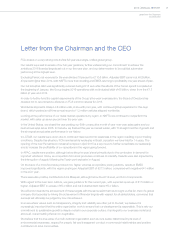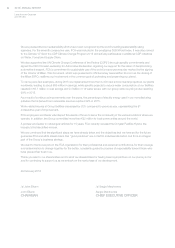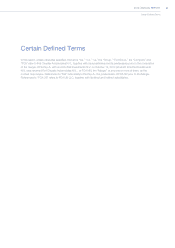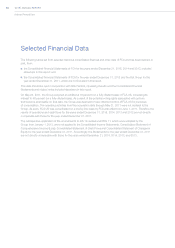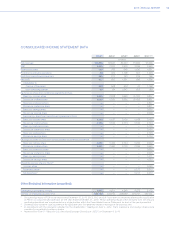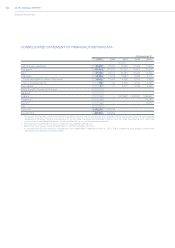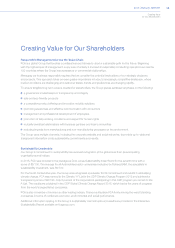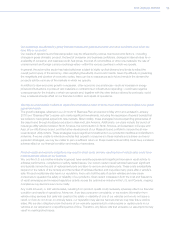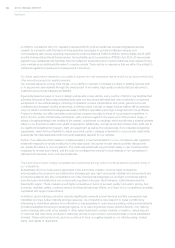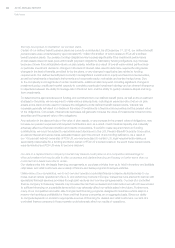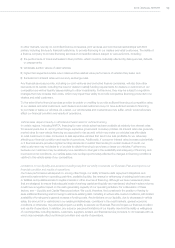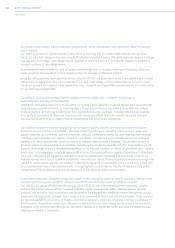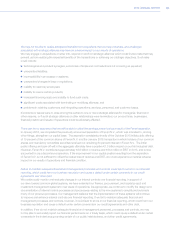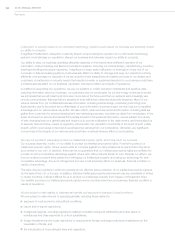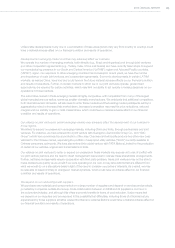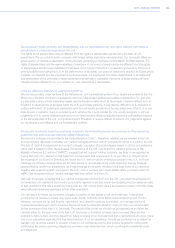Chrysler 2015 Annual Report Download - page 16
Download and view the complete annual report
Please find page 16 of the 2015 Chrysler annual report below. You can navigate through the pages in the report by either clicking on the pages listed below, or by using the keyword search tool below to find specific information within the annual report.
16 2015 | ANNUAL REPORT
Risk Factors
In addition, compliance with U.S. regulatory requirements for product recalls has received heightened scrutiny
recently. In connection with the failure in three specified campaigns to provide an effective remedy, and
noncompliance with various reporting requirements under the National Traffic and Motor Vehicle Safety Act of 1966
and the Transportation Recall Enhancement, Accountability and Documentation (TREAD) Act, FCA US has recently
agreed to pay substantial civil penalties, become subject to supervision and in certain instances been required to buy
back vehicles as an additional alternative to a repair remedy. There can be no assurance that we will not be subject to
additional regulatory inquiries and consequences in the future.
Our future performance depends on our ability to expand into new markets as well as enrich our product portfolio and
offer innovative products in existing markets.
Our success depends, among other things, on our ability to maintain or increase our share in existing markets and/
or to expand into new markets through the development of innovative, high-quality products that are attractive to
customers and provide adequate profitability.
It generally takes two years or more to design and develop a new vehicle, and a number of factors may lengthen that
schedule. Because of this product development cycle and the various elements that may contribute to consumers’
acceptance of new vehicle designs, including competitors’ product introductions, fuel prices, general economic
conditions and changes in styling preferences, an initial product concept or design that we believe will be attractive
may not result in a vehicle that will generate sales in sufficient quantities and at high enough prices to be profitable.
A failure to develop and offer innovative products that compare favorably to those of our principal competitors, in
terms of price, quality, functionality and features, with particular regard to the upper-end of the product range, or
delays in bringing strategic new models to the market, could impair our strategy, which would have a material adverse
effect on our financial condition and results of operations. Additionally, our high proportion of fixed costs, both due to
our significant investment in property, plant and equipment as well as the requirements of our collective bargaining
agreements, which limit our flexibility to adjust personnel costs to changes in demand for our products, may further
exacerbate the risks associated with incorrectly assessing demand for our vehicles.
Further, if we determine that a safety or emissions defect, a mechanical defect or a non-compliance with regulation
exists with respect to a vehicle model prior to the retail launch, the launch of such vehicle could be delayed until
we remedy the defect or non-compliance. The costs associated with any protracted delay in new model launches
necessary to remedy such defect, and the cost of providing a free remedy for such defects or non-compliance in
vehicles that have been sold, could be substantial.
The automotive industry is highly competitive and cyclical and we may suffer from those factors more than some of
our competitors.
Substantially all of our revenues are generated in the automotive industry, which is highly competitive,
encompassing the production and distribution of passenger cars, light commercial vehicles and components and
production systems. We face competition from other international passenger car and light commercial vehicle
manufacturers and distributors and components suppliers in Europe, North America, Latin America and the
Asia Pacific region. These markets are all highly competitive in terms of product quality, innovation, pricing, fuel
economy, reliability, safety, customer service and financial services offered, and many of our competitors are better
capitalized with larger market shares.
In addition, global vehicle production capacity significantly exceeds current demand and this overcapacity has
intensified and may further intensify pricing pressures. Our competitors may respond to these conditions by
attempting to make their vehicles more attractive or less expensive to customers by adding vehicle enhancements,
providing subsidized financing or leasing programs, or by reducing vehicle prices whether directly or by offering
option package discounts, price rebates or other sales incentives in certain markets. In addition, manufacturers
in countries that have lower production costs may choose to export lower-cost automobiles to more established
markets. These actions have had, and may continue to have, a negative impact on our vehicle pricing, market
share, and results of operations.



